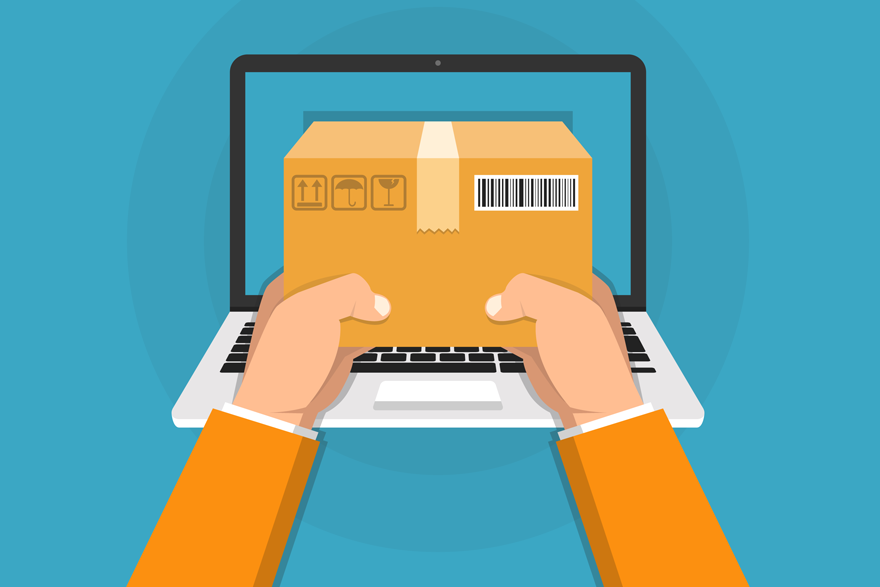Guest post by Jake Rheude, Director of Marketing at Red Stag Fulfillment
Every ecommerce business reaches the point where fulfilling orders is a barrier to growth. You might not have the time or space, or you might be struggling with affording costs as they scale. It can eat into marketing or customer acquisition budgets if you aren’t balanced.
Amazon pitches its fulfilment services as a way for SMBs to understand these costs and hopefully save some money while improving shipping speed. That’s not always the case, however. Your business has its own unique layout that could make this a money pit instead of a blessing.
Here’s a quick rundown on what is Fulfilment by Amazon (FBA) and how to start understanding if it is good for your business.
What is Fulfilment by Amazon?
Fulfilment by Amazon allows you to send your products over to an Amazon fulfilment centre, allowing Amazon to do the picking and packing and shipping of your goods to your customers. They do this using the Prime shipping service and pair it with their leading customer service.
Essentially, it’s a way for you to hand off the fulfilment side of your business so you can focus on products and sales, not orders and shipping labels.
How Does It Work for Ecommerce Businesses?
If FBA sounds like it could help you out, here’s a little more on how it operates and what you need to do to access the service.
1. Get an Account
First, you need to create an Amazon account to allow you to sell goods. There is an FBA feature that you can add when you create the account — or updated to for an existing account — and it’ll cover your seller information from business and banking to taxes.
2. Prep Your Products
After that, you create a list of products for your ecommerce business. Amazon works with a few different inventory management tools, so you might be able to integrate with it right away. Otherwise, you’ll have to enter the details manually. Pay close attention to the barcodes that you have to supply, because they’re more important to FBA than they are to most businesses.
Next, you physically ship your products to Amazon’s warehouses. They’ll tell you where to send things; you just have to figure out how much and pay for that space. A couple of good notes here are that Amazon will give you a discount on some shipping supplies and you can access their discounted carrier rates for shipping goods to an Amazon fulfillment center.
You will be required to print the labels that Amazon selects, whether you use the FBA Label Service or have other provided directly by Amazon. Manufacturer barcodes need to be included in your inventory information because Amazon will use these in its fulfilment.
Any speciality items you want to use, such as stickers or product labels, must be sent to Amazon either on or in the packages with your products.
3. Storage, Orders, and Shipments
After you send your products to Amazon, the company will receive them and scan in your inventory. It’ll record your unit dimensions and weights to determine how much space you need and how much to charge you for storage.
Then, you get access to the company’s inventory monitoring and tracking support, so you always know how much they have on-hand. It’s important to note that as products sit on their shelves, you could face increased storage costs.
When someone does buy your product from Amazon or your own website, Amazon will then prepare the order for shipment. It will pick your products from its inventory and pack them for delivery, updating inventory count as it goes.
Amazon has a warehouse system that makes this easier and allows your customers to combine the products with other things that they order.
Once FBA has your products and any others that the customer orders together, it will send out the products based on the shipping method the customer chooses. The customer also gets the tracking information directly from Amazon.
While the company allows you to use FBA to fill orders that were placed on your own website and other locations, Amazon’s customer service and contact centre support only apply to orders placed on the Amazon platform.
How Can I Tell if It’s Right for My Business?

There are a few big business reasons to consider adopting FBA. You don’t necessarily have to agree with all of them, but if you say “yes” to a mix of these below, then FBA might be an appropriate choice for your business.
1. Workforce Help
Perhaps the biggest reason to choose FBA is when a small company is growing rapidly and having trouble finding the right mix of people and time to focus on sales, inventory management, and order fulfilment. If you’re a solo, teaming up with FBA might actually let you have a couple of hours of sleep each night.
Consider the costs of FBA against the time it takes you to fill and ship orders, especially if you’re driving to the post office multiple times a day to get things off in time.
2. Free Shipping and Deals
Amazon extends its Prime offering to your goods when you use FBA. So, Prime subscribers will get free speedy shipping, which can make your products more appealing. For non-Prime members, customers still get access to discounts.
All orders of $25 or more of eligible items — which covers most FBA items — any product category qualify for free shipping. FBA is a great and uncomplicated way to get your goods included in the list of those with the “FREE shipping” label that Amazon uses to advertise this offering to shoppers.
3. Improved Search Results
Building on the note above, Prime subscribers can also sort results by what’s Prime-eligible, getting you closer to the stack. The millions and millions of Prime users love sorting because it means they get things quickly, which is what they’re paying for in Prime.
Amazon FBA products also tend to appear higher in search rankings on the site too, which helps boost your sales.
4. Customer Service
FBA comes with Amazon’s leading customer service. When a package doesn’t arrive or is wrong, Amazon handles the replacement. Amazon does all of that time-consuming work, and they even can manage returns and getting products back into circulation. It’s one less hassle to deal with for your team.
5. Little-Known Name
What if you’ve got a great idea but are having trouble getting started? What if people love your products but aren’t necessarily attached to your company name?
If you’re a small, but growing brand, then FBA can make sense because you’re allowing to use the big Amazon name for your efforts. Customers tend to trust Amazon, and it can be a smart way to establish a loyal following.
We also expect Amazon to hold sellers to a consistent quality for products and service, so the Amazon fulfilment will automatically give you credibility in those areas too.
If that all sounds good, Amazon offers a complete FBA guide to help you get started.
When Should I Avoid FBA?

While those advantages can sound great, some significant drawbacks might make it smarter for you to choose to do fulfilment yourself or to rely on your own speciality order fulfilment partner. Let’s look at some of these reasons.
1. Comingled Concerns
Amazon focuses on the customer first. Its priority is to get the products they buy to them ASAP. Sometimes this means purchases from your store are fulfilled by another company’s inventory. You still get credit for the sale, but Amazon is technically shipping goods that someone else provided.
The reason you must use the manufacturer’s barcode is so that this comingling can happen.
For some brands, this has led to people getting the wrong items or those that don’t look the same as what was pictured on the product page. If another seller made a mistake on the label, you could catch the blame. This might increase returns and decrease your customers’ satisfaction.
2. Bulky or Heavy Items
Amazon charges more to store and ship items that are overly large or heavy. The company’s storage costs show a preference for smaller items.
If your products are inexpensive, you’re losing more of your margin on each sale. Many ecommerce companies already have thin margins, so this might make your sale unprofitable on some goods.
3. Many Different Fees
Amazon has a lot of fees and costs associated with FBA, some of which can be frustrating. Not only are there different rules for storing products, but, in essence, you’re also paying for some expenses twice. You have to pay to get your goods to Amazon, and then you pay Amazon to ship those goods to your customers.
When adding up all the storage, materials, labelling, and shipping costs, you could realise that you don’t come out ahead with FBA.
4. The Customer Is Always Right
The final concern is with your products and customers. Even though you’re technically a customer of an Amazon service, it still will prioritize the needs and preferences of the end-consumer who buys your products.
Amazon has to do this to keep its large base happy. However, that means you’ve got less wiggle room on things like returns and replacements. Customers sometimes return used items, and they can avoid return costs and even whole order costs by claiming the product came used or damaged.
It isn’t a common occurrence, but it can impact your business. Also, if you get too many negative reviews, Amazon might revoke your account. If that happens, you’ve got a logistical nightmare of getting your products back, and you have to start building your reputation over because your customer focus was on acquiring them through Amazon.
How Do I Decide?
It can get a bit tricky to learn if FBA is right or wrong for you. Each business has unique circumstances and cases where it might be smart, while negatives may hold you back. The best thing to do is consider your current costs and how they compare with the costs of using FBA. Remember, add wages and other worker costs to your calculation if FBA will prevent you from having to hire additional staff.
If you’re likely to save money, then do a little more research. Look at how much control Amazon wants and if you are comfortable giving it to Amazon. You might even see that FBA works for some products but not others.
It’s a complicated dance, but one that can make thanks to your knowledge and dedication to your ecommerce business.
Related: Pros and Cons of Using Amazon FBA



